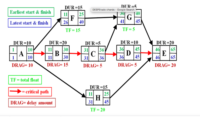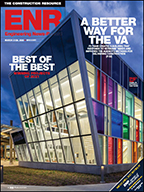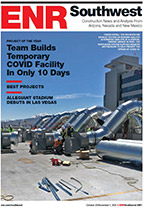"There are several trades that often just need one trade to get a few days' head start on the successors, such as metal-stud framing followed by electrical in-wall rough-in. The electrician is not going to wait until framing is complete to start. But at the same time, wall framing needs to complete before electrical in-wall can complete: SS-FF. And in most cases, there is no practical way (or useful purpose) to break down the framing activity any further to create an opportunity for a FS relationship. Are some of the lags going to be somewhat subjective? Yes. There is no way around it. But it is realistic because, at some point, there will be a subjective decision on when the electrician will start."
Japka agrees: Some SS-FF relationships in schedules can be used responsibly without messing with float calculations. "To me, the critical path is the longest path through the network that determines the project completion date," he says. "Total float, which is what most people think is the indicator of the critical path, is calendar-dependent, which makes it a little bit difficult if you're clueless on how to analyze a critical path. Many software systems have what's called the longest path, which is based on the driving predecessor, not on total float. If you don't understand that, no software will solve your [scheduling] problem," Japka says. "The bottom line is, you have to understand what you're scheduling."
Room for Improvement
Fred Plotnick, whose book "CPM in Construction Management," co-authored by James J. O'Brien, is considered required reading for construction professionals, says scheduling theory is often lacking at the university level and is usually taught as a two-week seminar.
"There is room for improvement at the university level for teaching more courses on project management techniques," says Plotnick, also a professor of engineering at Drexel University in Pennsylvania.
 |
| Plotnick |
"The engineer has to understand the mathematics behind the rules," he says. "It's not just scheduling. It's any field of engineering. A person has to have some knowledge of why specifications are there and apply some rules."
Plotnick says the want ads for the construction industry tell the tale of the need for more schedulers who understand CPM theory.
"Keep in mind why," he cautions. "A seasoned scheduler is the right hand of the superintendent on a project. He or she has to have the technical skills to [use] the software, especially if a claim comes up. Typically, [the] super has to be out there making decisions which make money for the job. But there are other things very important to the project that a good scheduler can do, such as helping put together a potential claim and documenting it properly. That probably explains why many schedulers attend law school at night."
If it sounds like a little bit of rocket science, Plotnick would disagree. "It's not rocket science. It's a lot more than rocket science, if you really understand what's going on." On the other hand, if you don't know scheduling, "you can just use the software to press a button and out will pop the answer."
As the organizer of the industry's annual (which brings leading experts in the field together for a week of workshops, panel discussions), Plotnick often finds himself repeating his mantra that better scheduling techniques are about the fundamentals of CPM theory, and about methods of construction.



